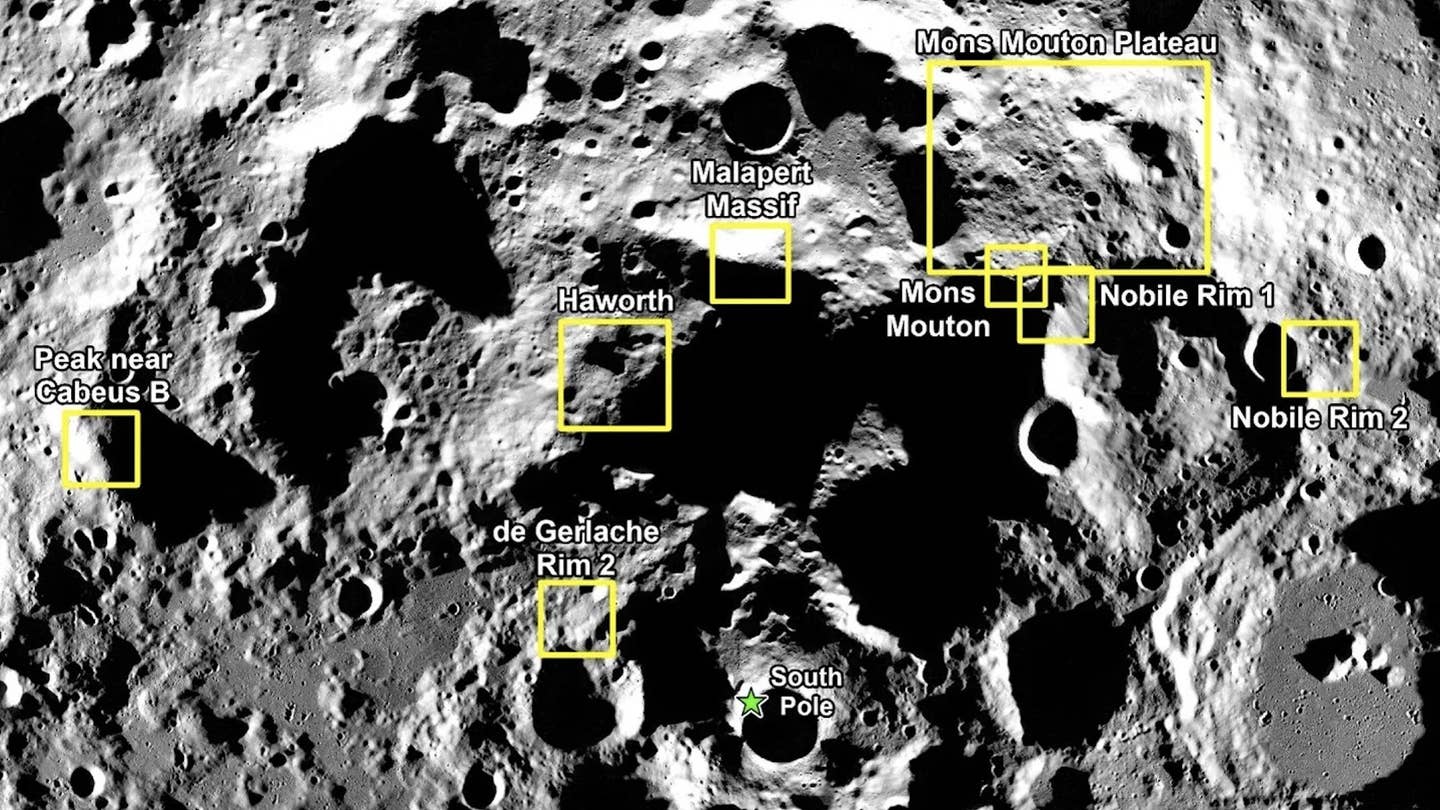When NASA Astronauts Return to the Moon, Here’s Where They Could Land
Space agency unveils nine potential landing regions for the Artemis III mission to the lunar south pole, a treacherous, unexplored location.

Pictured are eight of the nine potential landing regions NASA identified for the Artemis III moon mission, among them craters, mountains, and plains. [Courtesy: NASA]
NASA is gearing up to return Americans to the moon for the first time since the Apollo missions half a century ago. This week, it unveiled where they may land.
The space agency on Monday revealed nine potential landing regions for the Artemis III mission to the lunar south pole, tentatively scheduled for September 2026. Artemis III will be the first time humans have explored the mysterious region and will land the first woman and person of color on the moon.
“Finding the right locations for this historic moment begins with identifying safe places for this first landing, and then trying to match that with opportunities for science from this new place on the Moon,” said Jacob Bleacher, chief exploration scientist at NASA.
The moon’s south pole is a treacherous zone, with some regions that have not seen sunlight in billions of years. But NASA believes braving the harsh conditions, including temperatures below minus-334 degrees Fahrenheit, will be worth it given the potential for discovery.
So-called “permanently shadowed regions” at the south pole are believed to contain trapped lunar volatiles: solid-state compounds that melt at warmer temperatures, such as ice cubes. Astronauts will perform moonwalks wearing specially designed spacesuits to collect samples of these frozen substances, which could help scientists better understand the solar system’s 4.5 billion-year history. They may even discover water.
The Artemis III crew will land within a 100-meter radius inside the Starship human landing system (HLS) designed by SpaceX at one of nine regions selected by a team of scientists and engineers. Officials considered the terrain, lighting, communications capability, and scientific value of each region. Potential landing sites include craters, mountains, and lunar plains, covering a diverse range of geological features and conditions.
“The moon’s south pole is a completely different environment than where we landed during the Apollo missions,” said Sarah Noble, lunar science lead for Artemis at NASA headquarters in Washington, D.C. “It offers access to some of the moon’s oldest terrain, as well as cold, shadowed regions that may contain water and other compounds. Any of these landing regions will enable us to do amazing science and make new discoveries.”
The Artemis site assessment team will continue gathering data, building maps, and surveying the landscape of the potential locations. After finalizing a mission timeline, it will choose sites within each region to explore and further narrow down the candidates. NASA is also eyeing potential landing regions beyond Artemis III, such as the mysterious Shackleton crater, which on Tuesday it said remains a future possibility.
Before returning Americans to the moon, NASA will first need to fly astronauts to lunar orbit during Artemis II, a precursor to the lunar landing scheduled for September 2025. The Artemis II crew this week began preparing to step into a simulator of NASA’s Orion capsule, its vessel for the 10-day journey.
Like this story? We think you'll also like the Future of FLYING newsletter sent every Thursday afternoon. Sign up now.

Sign-up for newsletters & special offers!
Get the latest FLYING stories & special offers delivered directly to your inbox






